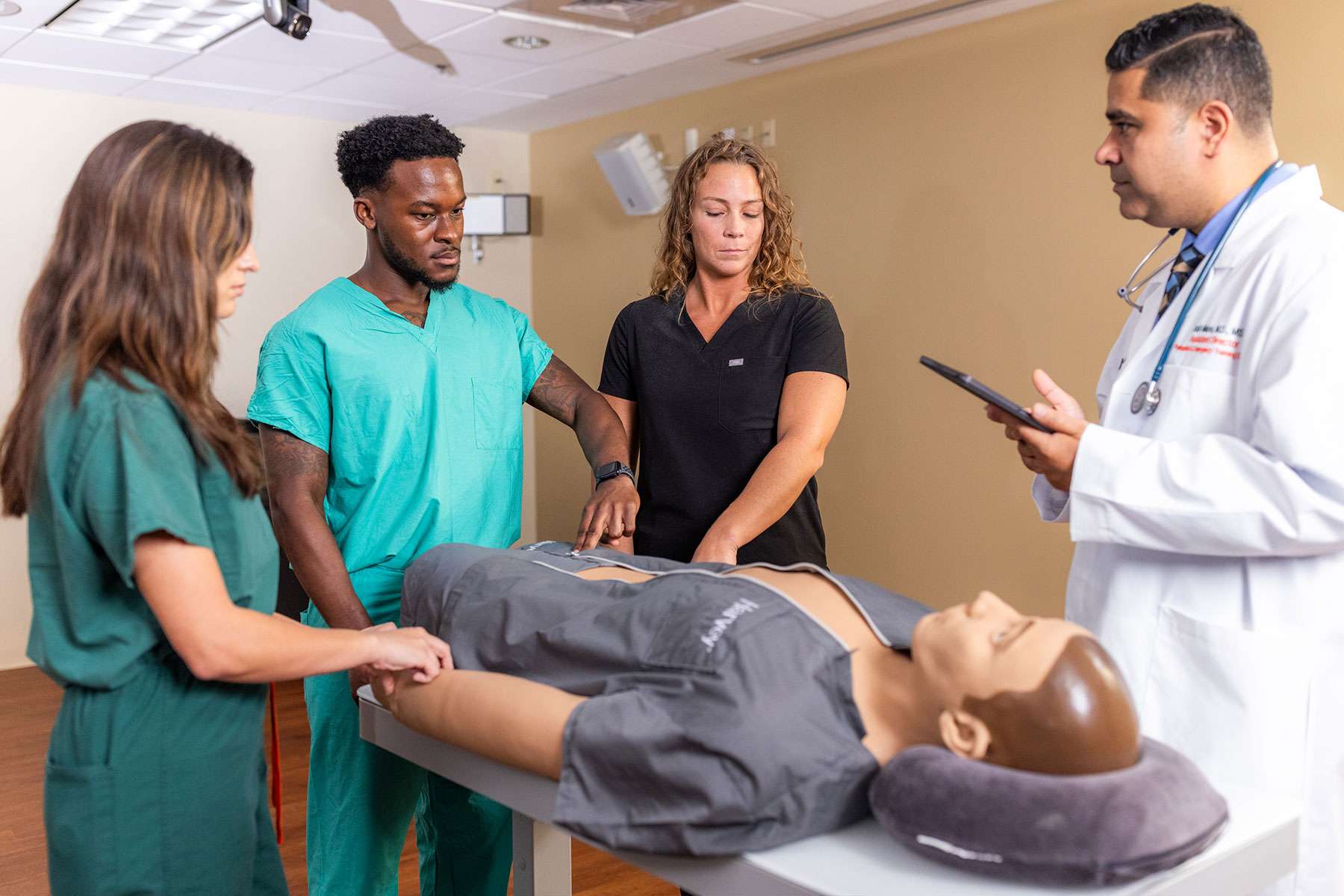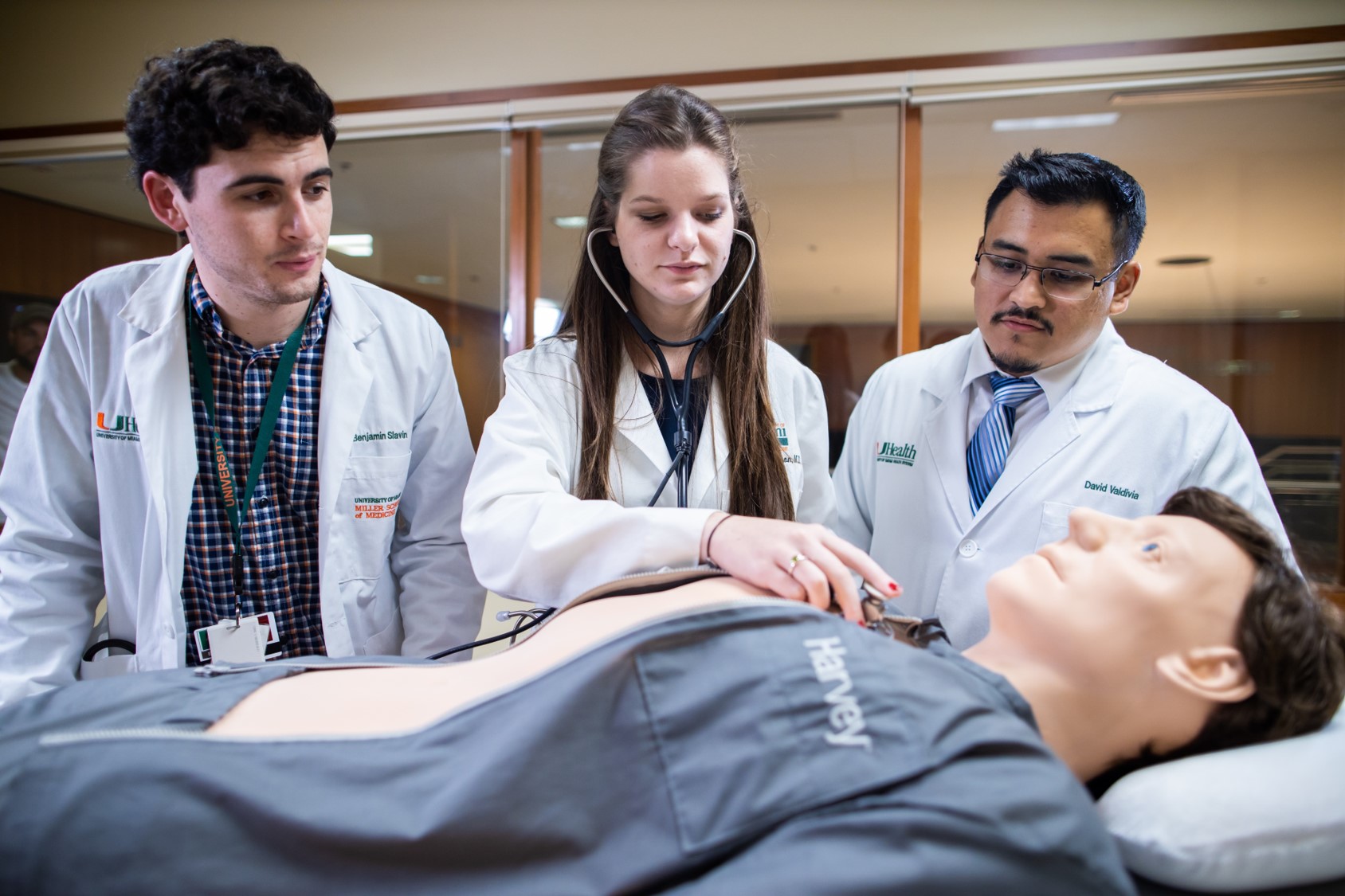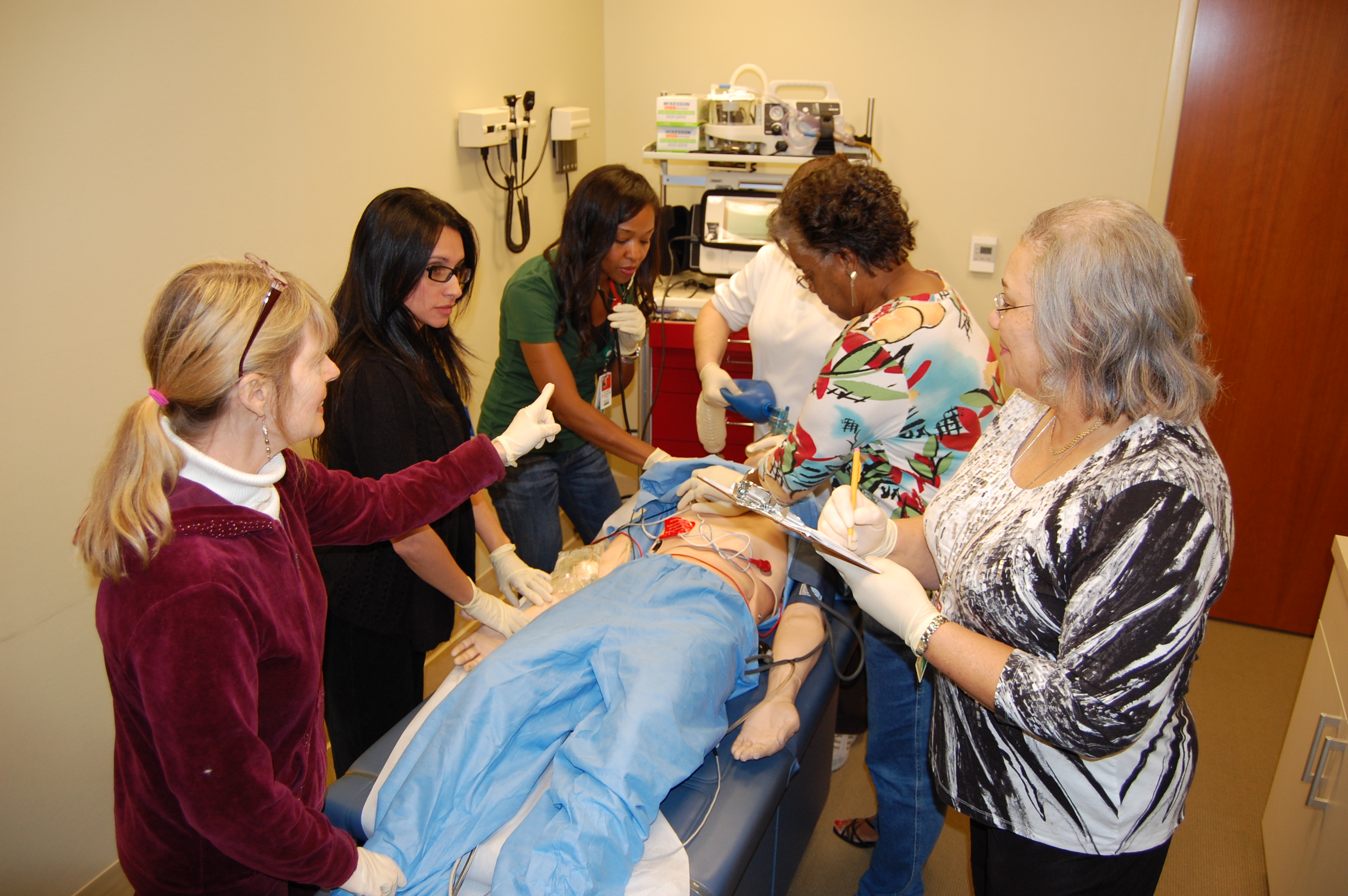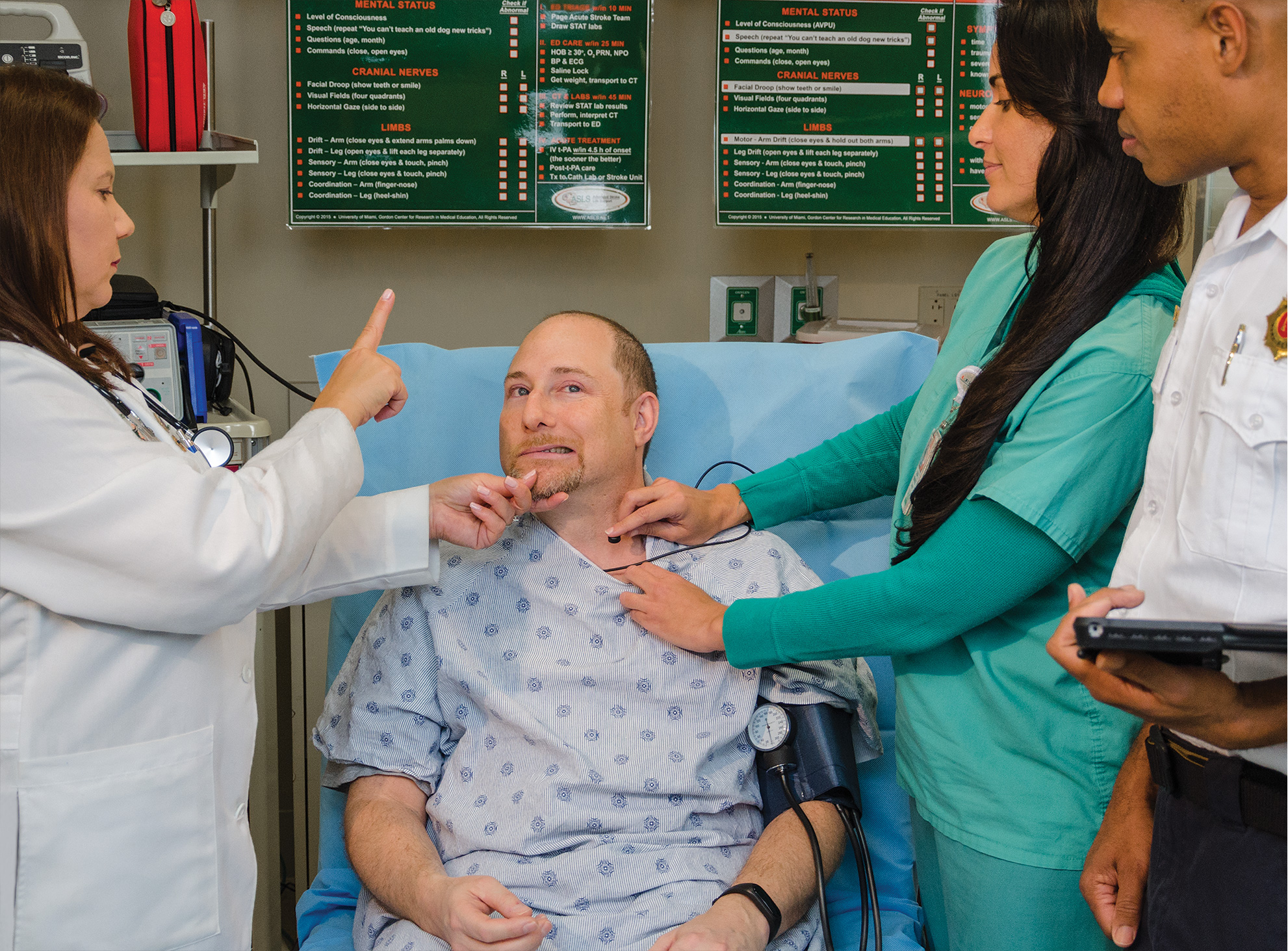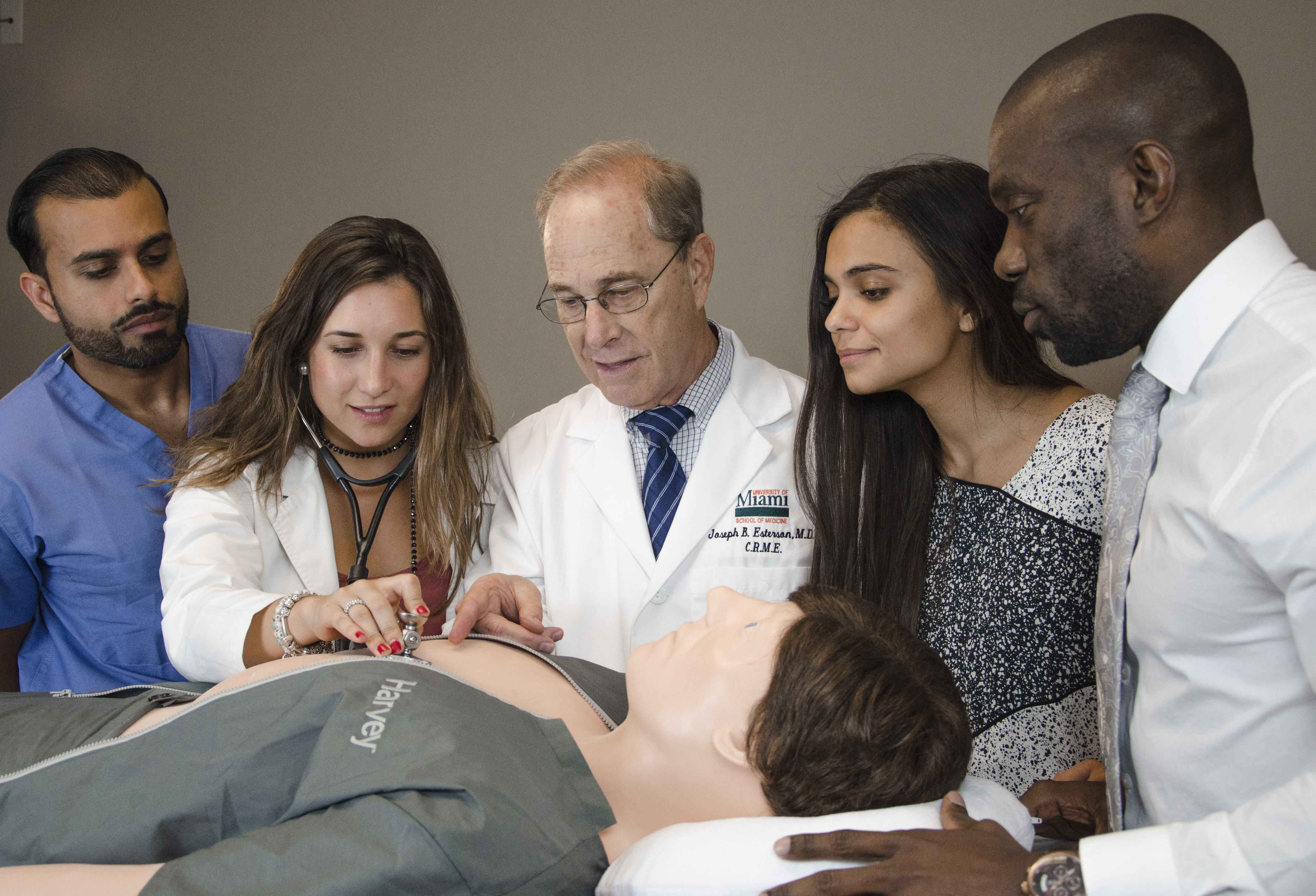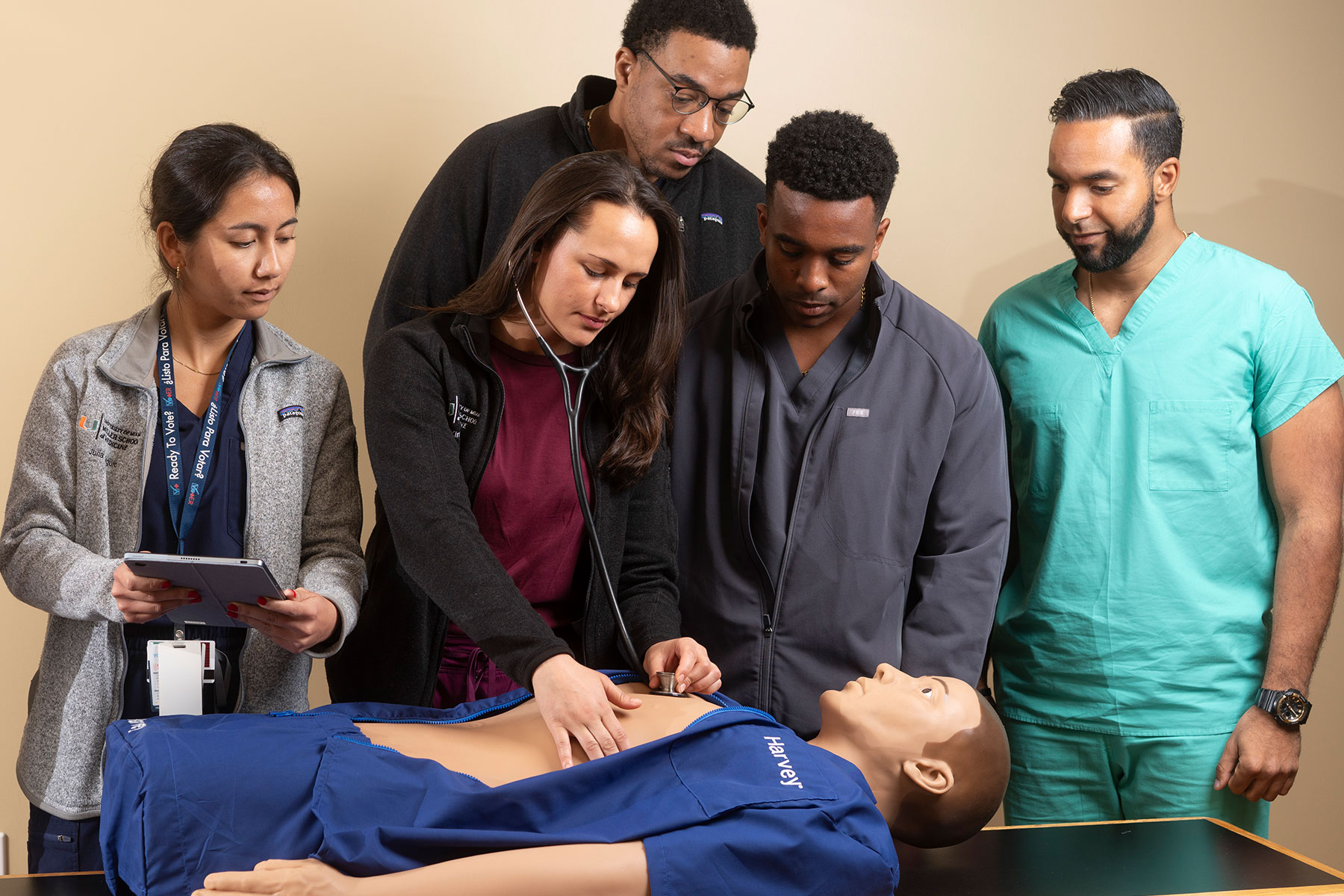
Designed for any Learning Environment
Harvey Premier is lightweight and portable, making it ideal for multiple learning environments. Group learning can be facilitated using any wireless listening device. Enhancements include a micro-computer control system and a tablet-based user interface for remote simulator operation, teaching and assessment, technical diagnostics, and software updates.
Small groups can learn independently using slide programs or the UMedic system. Harvey may also be used in Clinical Skills or Simulation Training Centers or SP training areas. Larger groups may learn in a lecture hall by using stethophones for auscultation and video projection for observing other physical findings.
Most importantly, the main location should be convenient for both students and the person-in-charge. Even though Harvey functions as a self-learning device, the nearby presence and availability of knowledgeable faculty and staff will further ensure a successful program.
